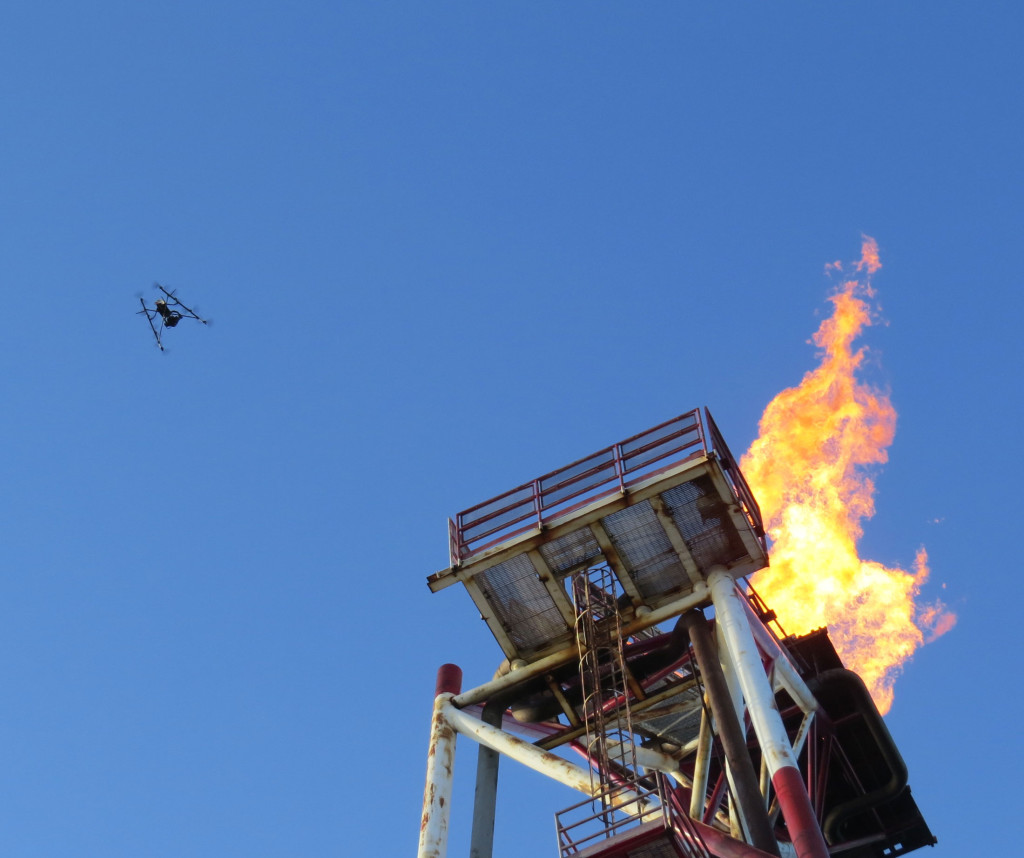
“We decided to focus on oil and gas because the barriers to entry are very high, but there are real problems to be solved and the economics were better, despite the very low oil price,” Blackford says.
Business, Blackford says, is booming. Although the first drone inspections were carried out five years ago, demand for Sky Futures’ and Cyberhawk’s services has surged, more than doubling in the last year alone.
At the start of 2015 the Federal Aviation Administration finally relaxed its stance on drones flying in U.S. airspace, giving companies like Sky Futures access to the world’s largest offshore market. ”We will continue doubling, if not tripling, revenues over the next three to five years,” says Blackford.
Drone Data
Inspections involve sending one drone operator and one engineer out to a rig to fly a small aerial vehicle around the platform, building a 3D model of the structure and mapping any anomalies.
“What we can capture in five days using a drone could take eight weeks with human inspectors,” Blackford says. “We can even inspect the flare stacks while in production, which saves money.” Avoiding a shutdown can save more than $4 million, the company says.
Once the data is captured, it’s analyzed using proprietary algorithms and presented through an online portal, instead of a traditional paper report. Each flaw is flagged in red, amber or green, based on urgency. Thanks to lasers, Sky Futures’ drones can track cracks and corrosion and map how they evolve over time. They can even sniff for gas leaks.
Cyberhawk, founded in 2008 in Livingston, Scotland, offers a similar service to oil and gas companies as well as inspecting renewable energy plants with wind turbines, communications towers, pipelines and railway lines and bridges.
Cyberhawk’s commercial director, Phil Buchan, says his customers don’t care about the drones, only the data: “They care about the information you can give them and the decisions you can help them make.”
Blackford agrees: “We view ourselves as a data business and not a drone business.”
North Carolina-based PrecisionHawk has served the oil and gas industry by mapping the ice roads across remote areas of Alaska. In the past, coming within five miles of a polar bear den would have meant the replanning of routes at a cost of millions of dollars to avoid the animals. PrecisionHawk’s drones can identify the dens in advance.
Automation
The next milestone for inspection drones is automating their flight. “We still have to send out an oil and gas inspection engineer and a drone pilot. Our vision is total automation,” says Blackford.
Trouble is, drone technology isn’t yet good enough.
Jeremy Howitt, who oversees drone research at Qinetiq, says, “Once aircraft know where other vehicles and obstacles are and they have the ability to safely avoid collisions and areas of known traffic density, it will open up many new applications.”
Beyond oil and gas, there are plenty of other applications for these airborne inspectors.
“Oil and gas is a big vertical, but the same technology applies to lots of industries — wind farms, solar, other refineries, pipelines and other fixed infrastructure,” says Simon Menashy, investment director at venture capital firm MMC Ventures, which invested $4 million in Sky Futures in May. That’s before even looking at construction and agriculture. “There is lots of opportunity,” he adds.
http://www.bloomberg.com/news/articles/2015-08-21/flying-robots-replace-oil-roughnecks